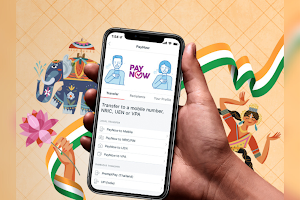While we have time and again told our readers about how Internet of Things or IoT is the next big thing and completely changing the way humans live, just the way internet did a few decades back.
According to recent statistics by IBM, the number of connected devices in the world is expected to reach as high as 30 billion in the period of next three years. In India alone, the number of units under IoT is expected to exponentially increase to 1.9 billion units by 2020 or about $9 billion.
This increasingly connected culture represents a great opportunity to businesses all around the world to harness the true potential of digital connections and significantly improve their products and services and thus, fostering deeper human connections and exponentially improving customer experiences and human relationships.
Global technology and innovation company IBM has been constantly pushing the boundaries of IoT to make way for a much more connected way of living. The company recently provided an insight into its IoT efforts at the Genius of Things Summit held at IBM’s headquarters for Watson Internet of Things in Munich.
Here, in this article, we bring to you the real world IBM IoT case studies from Visa, Airbus, Bosch and SNCF.
Cognitive Commerce
Considered a revolutionary phenomenon, cognitive commerce basically involves the usage of a wide range of technologies, right from speech recognition to a recommendations system based on machine learning. It enables a deep understanding of the behaviour and preference patterns of customers’, both at the aggregate and individual level. Once this task is completed, the collected data is applied in a real-time manner to provide customers with a truly personalised experience and improve their satisfaction, which eventually drives in more revenue to the company.
Use Case: Visa
A week back we reported how IBM and Visa Inc. have recently joined hands on a common mission to make every Internet-connected device on the planet its own point of sale (PoS). The two companies plan to achieve the same through Visa’s token technology and IBM’s Watson for IoT platform.
The technology will allow IoT customers to make payments from any of their IoT connected devices, right from a car, a watch or an app. One could now put their car to use to pay for gas without needing any cash, cards or phones. Or, even our old shoes could soon purchase new ones, as and when they sense they're no longer in a condition to be used.
Connected Devices
This basically involves the great merging of the real world with the digital world using sensors. These sensors when put into smartphones, automobiles or any other device immediately makes them internet-compatible. These sensors are capable of measuring light, temperature, sound, magnetic fields, humidity and pressure etc. The data collected is then programmed, processed, and transmitted to the user by making use of a radio network, thus making it possible for them to control their smart devices from anywhere on the planet.
Use Case: Bosch
‘Bosch IoT Rollouts’ is a recently introduced revolutionary service for cloud-based software updates and advance device management. According to Bosch, it will be putting its expertise in manufacturing and development to use along with the great IBM Watson IoT platform in order to seamlessly update connected devices and deliver personalised services and experience to customers with connected devices.
Predictive Maintenance
Considered as one of the most valuable IoT application, predictive maintenance helps in significantly bringing down the maintenance costs, increase asset availability, and improve customer experience by issuing a warning before a machine or equipment is about to break down. It typically involves a deep analysis of large volumes of sensor data, such as voltage, vibration, temperature and oil levels in order to predict the maintenance needs of a an equipment before the failure happens.
Use Case: SNCF Railway
For the uninitiated, SNCF is a front runner when it comes to passenger and freight transport services. The company, which has a wide network of over 15,000 trainers covering more than 30,000 kilometers of track, has recently entered into a collaboration with IBM. This collaboration will see see SNCF connecting its entire rail system, including trains, train stations, and railroad tracks to IBM's Watson IoT platform. The real-time data collected from the sensors will put to use by SNCF to decide repair requirements and at the same time significantly improve security and availability of the company's assets.
Digital Twin
It is an efficient way of working that involves a cloud-based virtual image of an asset maintained throughout its lifecycle and easily accessible at any time of the day. It allows all experts to come together under one platform and work cost-effectively, reduce errors and improve efficiency. All this ultimately results in a more safe, profitable and sustainable operation environment.
Use Case: Airbus
The concept of digital twin engines and digital twin bearings are being used by Airbus and Schaeffler, respectively, so as to increase their operation productivity, transform production process and improve design elements. The two giants are in a mission to reshape their corresponding industries by employing the services of IBM Watson IoT platform. The cognitive cloud based insights augments predictive systems to enable improved efficiency and safety for the aforementioned manufacturing biggies.













 IndianWeb2.com is an independent digital media platform for business, entrepreneurship, science, technology, startups, gadgets and climate change news & reviews.
IndianWeb2.com is an independent digital media platform for business, entrepreneurship, science, technology, startups, gadgets and climate change news & reviews.



